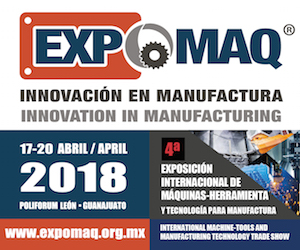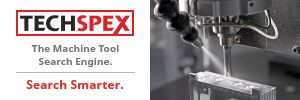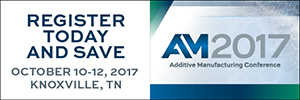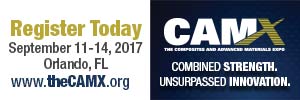Creating automobiles is not a singular process, especially now with the globalization of engineering, design, and manufacturing facilities and third-party suppliers. This is why the information system, helping to create cars is more than just computer-aided design (CAD) and computer-aided manufacturing (CAM).
Today’s CAD/CAM systems are “a seamless integrated portfolio of capability that goes all the way from the idea of painting something and converting that to math, right through design, production, marketing, and service,” says Gene Consolo, engineering director of North American Operations (NAO) Design & Engineering Operations at the General Motors Technical Center (Warren, MI). “At the core of that is a CAD/CAM system with the capability around the world to do what we have to get done.”
Not just any CAD/CAM system will do. The automakers headquartered (or co-headquartered) in Michigan have “standardized” the CAD/CAM systems from three suppliers: CATIA from Dassault Systèmes, I-DEAS from Structural Dynamics Research Corp. (SDRC), and Unigraphics from Unigraphics Solutions, Inc.
Obviously, something about these three CAD/CAM systems makes them rise above the pack. There are several, according to Dave Burdick, vice president of Engineering Applications for the market research firm Gartner Group (San Jose, CA):
• Advanced surfacing
• Advanced solid modeling
• The ability to handle large assemblies.
• Robust manufacturing capabilities
• Robust product data management (PDM) capabilities.
“There’s virtual parity among the three CAD/CAM companies in the automotive market,” says Burdick. “You would need a high-powered electron beam microscope to differentiate between them.” With one exception, he adds: SDRC is not as strong in CAM capabilities as Dassault and Unigraphics, but it is stronger in PDM.
Here are examples of automotive CAD/CAM capabilities. Your mileage (i.e., your CAD/CAM system as implemented) may vary.
Advanced Surfacing
In the beginning, computer graphics could easily handle lines, circles, regular cubes, and flat surfaces. But automobile design is more than that, points out Carl Machover, President of Machover Associates (White Plains, NY) and editor of the McGraw-Hill CAD/CAM Handbook. “An automobile has subtle curves on the surfaces, so the blending between adjacent panels is extraordinarily important. It’s not just a question of defining these things mathematically; there are enormous esthetics involved.”
Surfacing and the ability to handle the aesthetic issues in automotive engineering is what most separates CATIA, I-DEAS, and Unigraphics apart from the other CAD/CAM systems, according to Burdick.
For example, the latest release of CATIA-CADAM includes CATIA Body-in-White Templates. These templates replace the need for designers to build construction elements, add surfaces to these elements, and then modify the results to respect technological and manufacturing constraints. Instead, designers first define the design and manufacturing specifications for the new automobile, such as master parametric sections, filleting radii, and minimum die angle values. The system then automatically generates high-quality surfaces and skins to meet those specifications by sweeping variational sections along 3D curves and their connections.
The Body-in-White Templates let designers specify up to three die angle constraints, as well as the angular positioning between beams themselves and optional external reference surfaces. The templates can automatically connect two beams with tangential conditions and can join two sections with a different number of vertices.
Advanced Solid Modeling
Only recently, continues Machover, can create realistic views of automotive designs gotten good enough to replace the need for clay models. Given human nature, though, it may take another generation of automobile designers before the industry completely does away with clay models.
In the meantime, the “virtualness” provided by CAD/CAM technology keeps getting better and better. Unigraphics’ high-end CAD systems are powered by the company’s Parasolid modeling kernel—a kernel available to all of Unigraphics’ competitors, including Dassault (SolidWorks), Bentley Systems (MicroStation Modeler), and Parametric Technology Corp. (DesignWave). Parasolid provides a variety of 2D-to-3D design features for advanced blending and chamfering of edges and faces, including rolling ball, variable-radius, face-to-face, overlapping, curvature continuous, tangent hold line, conic-section, and conic-hold line blends. Parasolid can apply and use different tolerances on individual edges, and it can automatically calculate appropriate tolerances while sewing surfaces together.
Creating thin-walled parts requires a system capable of handling the topology changes that frequently occur in hollowing, offsetting, and thickening operations. Parasolid handles such requirements and conversely, supports mold and die design environments, which can use advanced tapering functionality to handle complex parting lines and surfaces.
Handling Large Assemblies
Automotive CAD/CAM must also address straightforward mechanical design issues, such as fit, clearances, strain, stress, heat, and vibration. However, despite what the sales literature says, not all CAD/CAM systems can handle the gargantuan part files typical in automotive designs—part files that might contain upwards of 14,000 components. Operative word: “handle.” “Some CAD/CAM systems can `handle’ a part file with several thousand components,” says Burdick, “but you can measure the system’s response time by the length of the coffee break you can take between mouse clicks.”
SDRC’s I-DEAS Master Assembly software can handle such files. This software lets designers work in a multi-user environment to layout, design, and manage large mechanical assemblies. Its interactive tools let designers position parts relative to other parts using intuitive constraints and dimensions that define design intent. Design changes to one part ripple through the entire assembly, dynamically updating part and subassembly positions.
This functionality lets design teams work in a “top-down-to-bottom-up” manner, starting with a product structure. As designers create more detailed designs of parts and subassemblies, these designs replace the spatial envelopes in the assembly. In this way, the design grows in complexity while the top-down spatial constraints in the product structure are maintained.
Eventually, you wind up with a complete electronic mock-up of the assembly to view parts, assembly relations, constraints, and part- and assembly-level properties with different densities allowed for each part. You can view animations of assemblies in motion while varying the lengths of individual parts and seeing the effects of those design changes on the assembly.
UG/WAVE from Unigraphics is a different approach to the same problem of assembly modeling. UG/WAVE was included in Unigraphics Version 14; Version 15 is currently in beta testing at General Motors. UG/WAVE marries systems-level engineering and parametric modeling technology. It is to assemble what parametric is to parts, according to Unigraphics.
UG/WAVE lets automakers identify the most important design variables that drive their product designs and then capture them in an associative control structure. It can be applied to any system or subsystem within a vehicle, as well as any process: design, structural integrity, styling, manufacturing, and so on.
“UG/WAVE helps us do a what-if scenario early in our product design cycles,” says Ron DeBrabant, director of CAD/CAM Integration and Design Process at the GM Technical Center. Software of this type also enables concurrent engineering, promotes design reuse, and ensures design standardization—even while General Motors evaluates different automotive platforms in response to various market and automotive brand themes. UG/WAVE allows General Motors to quickly “morph,” as DeBrabant puts it, all the parameters involved in a new design, including human, engineering, manufacturing, and marketing constraints. Once approved, the morphed designs then cascade down to all affected assemblies and components.
Manufacturing Capability
The end product is not a drawing. The end product is the part that goes out the door. In this realm of creating tooling, generating numerical control (NC) programs, and generally just making parts from original part geometry, says Burdick, “Unigraphics and CATIA are head and shoulders above the rest of the market.”
At the very least, the manufacturing side of automotive CAD/CAM systems must support basic generative machining disciplines, 2- through 5-axis milling, lathe, wire electrical discharge machining, sheet metal manufacturing, and tool path generation. Having a broad spectrum of NC post-processors driven by approved design geometries is a “must-have.” So, too, are the abilities to graphically examine and to visually replay and verify machine tool paths and robotic movements. And nowadays, rather than make models out of clay, wood, or—horrors!—metal, rapid prototyping, such as through stereolithographic processes, is commonplace.
Product Data Management
PDM is now an absolute. “I don’t think you can evaluate the CAD side of CAD/CAM without the PDM piece. You’d be missing about half of it,” says Stew Caulfield, manager of Product Information Management Systems for Ford Motor Co (Dearborn, MI). He also says that the vendors’ PDM systems aren’t as far along as their CAD systems.
PDM helps solve the problem of getting that well-developed, solid model of a vehicle to all the appropriate people in a synchronized fashion throughout the enterprise—internally and externally. Knowing this, the suppliers are responding with products. Dassault just formed a wholly owned subsidiary, Enovia Corp., out of the assets of the product manager business it acquired from IBM. Enovia provides Enovia.VPM (Virtual Product Model) and Enovia.PM (Product Manager), two CAD-independent, graphically oriented collaborative environments. Unigraphics has its IMAN product for enterprise-level PDM.
One of the more mature PDM products is Federated Metaphase, from SDRC. This PDM product satisfies the global nature of OEMs, and their need for confidentiality, explains Caulfield. Federated Metaphase lets Ford have local repositories and different product structures while letting the company exchange within those repositories and structures the parts of the product that are common. Better, the PDM system lets Ford globally communicate product information and design changes to suppliers easily.
Being object-oriented, Metaphase captures product information at the source regardless of platform or database, stores that information in a master location and format, and then displays information to all users from a single common interface. Metaphase includes all product geometry and non-geometric information. It supports workflow, configuration management, document management, and change control, and complies with a bunch of initiatives, including ISO 9000, CALS/CITIS, MIL-STD-974, and MIL-STD-973.
Federated Metaphase goes one step further. It is for independent organizations that want to share PDM-based information to support the “virtual corporation” concept.
“Ford will use PIM to go well beyond the concept of `corporate memory’ to `corporate teaching,’ using information management technology to institutionalize lessons learned into corporate memory so that solutions do not have to be reinvented when engineers move to new assignments or leave the company,” says Caulfield.
More to Come
Given the size of the installed base for CATIA, I-DEAS, and Unigraphics, you could almost forget about competitive systems and other CAD/CAM suppliers. Don’t, suggests Burdick. “It’s not inconceivable that every five years or so there’s going to be a major CAD/CAM-technology evolution that causes everyone to rethink what they’re doing and to look at potentially replacing some of their existing technology.”
The last such evolution was the advent of parametric and hybrid design. Before that, there was the move from 2D to 3D integrated modeling. The one coming might very well result from the intersection of CAD, PDM, and visualization tools.
To learn more about how cars are designed and improved, read related articles on Adandp.media
Stay tuned.








